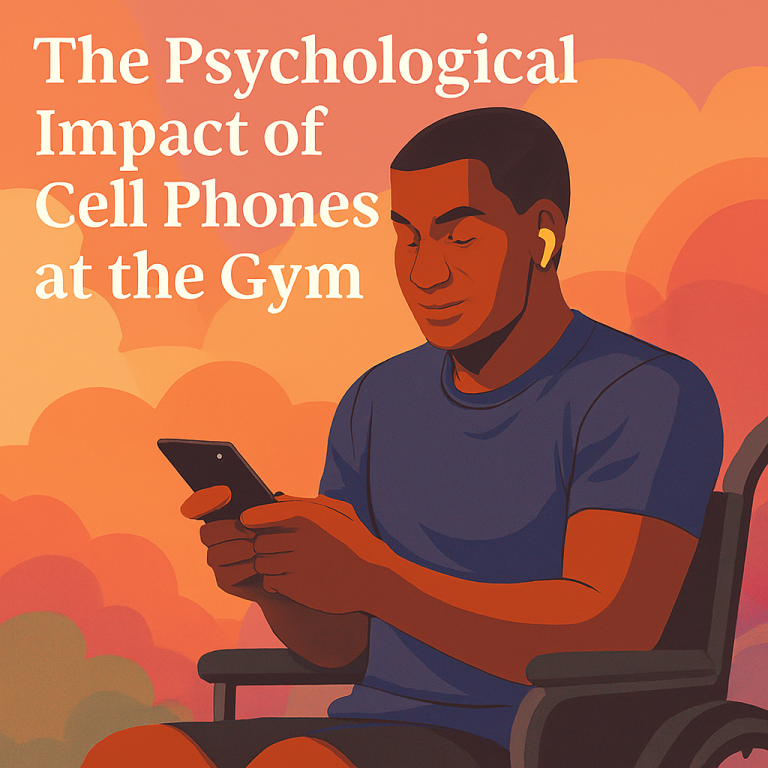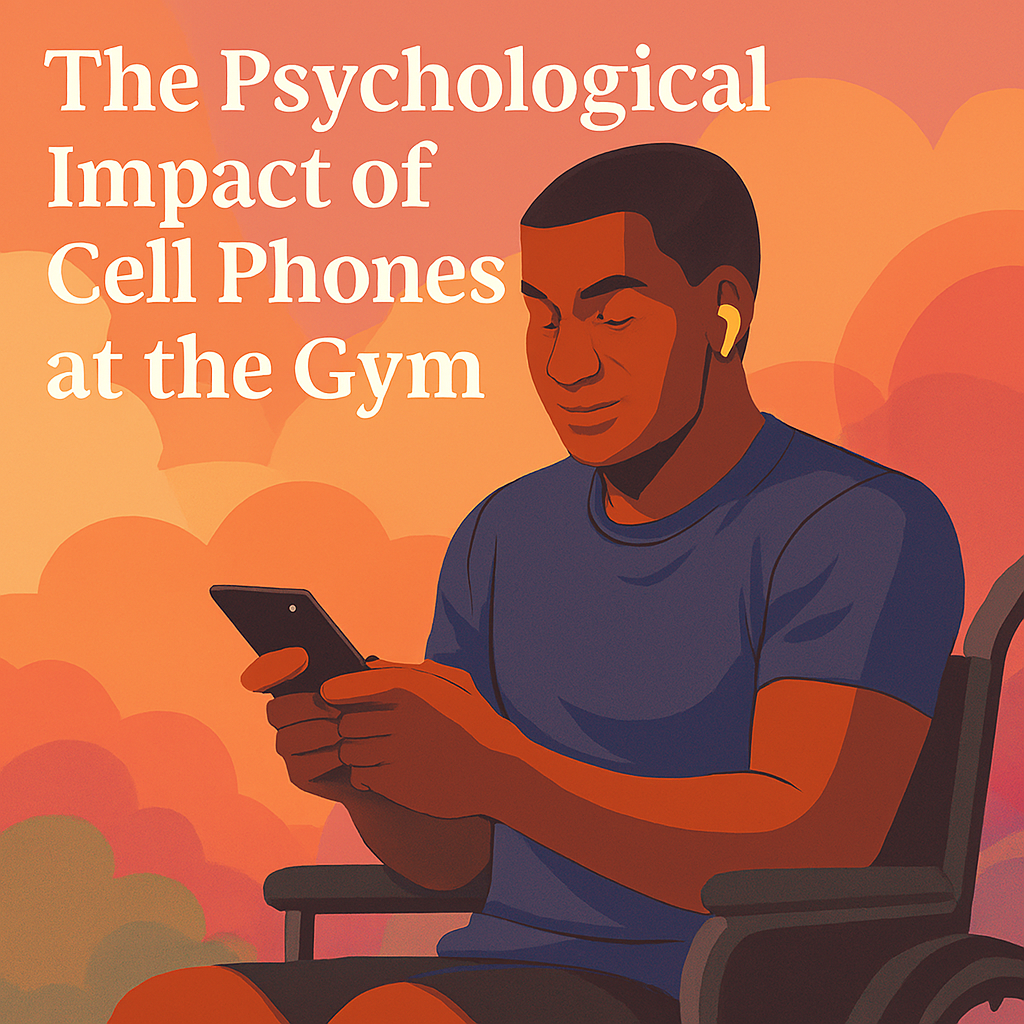
How Phones Reshape the Psychology Of Gym Culture
Gym Mobile Mindset
Mobile phones reshape the psychology of gym culture have become psychological co-pilots in the gym. They help users regulate emotion, reclaim autonomy, and shape identity. This isn’t just about convenience—it’s about control. Whether someone is training for performance, recovery, or mental clarity, mobile tech offers structure and support. Disabled users benefit from adaptive features, but the impact extends to everyone. Phones reduce friction, amplify focus, and personalize progress. The gym is no longer a neutral space—it’s a layered environment of visibility, vulnerability, and transformation. Mobile phones help users navigate that complexity.
Phones Reshape the Psychology Of Gym
Emotional Regulation
Mobile phones help users manage emotional intensity during workouts. Music apps allow people to modulate mood and energy. Guided meditations and breathwork tools offer grounding between sets. For those with anxiety or sensory sensitivities, control over sound and light is essential. Phones act as emotional buffers in overstimulating environments. Notifications can be silenced to reduce cognitive clutter. Visual timers and pacing apps reduce stress around performance. Emotional regulation becomes a feature, not a workaround. This supports deeper focus and safer effort. The gym becomes less reactive and more intentional.
Autonomy and Control
Mobile phones restore agency to users navigating complex gym environments. People can choose workouts, track progress, and adjust intensity without external input. This independence fosters self-efficacy and confidence. For disabled users, autonomy counters dependence and stigma. Beginners also benefit from self-guided routines. Control over pace and structure reduces intimidation. Phones allow users to bypass crowded areas or inaccessible equipment. Autonomy is psychological armor in unfamiliar spaces. It transforms the gym from a place of exposure to a place of ownership. Mobile tech makes that shift possible.
Identity Formation
Fitness is often tied to identity, and mobile phones help shape that narrative. Users define success through personalized metrics. Whether it’s reps, heart rate, or mood, the data reflects individual goals. This reframing supports emotional clarity. Disabled users can track effort without comparison. Social sharing tools amplify self-expression. Visibility becomes a choice, not a burden. Phones allow users to document progress on their own terms. Identity becomes fluid, self-authored, and emotionally grounded. The gym becomes a mirror, not a stage.
Cognitive Load Reduction
Gym environments can be cognitively demanding. Mobile apps simplify routines into manageable steps. Visual cues and voice prompts reduce decision fatigue. This benefits neurodivergent users and anyone with mental exhaustion. Structured pacing supports flow and focus. Phones reduce the need for memory recall during complex workouts. They also help users avoid multitasking errors. Cognitive clarity improves safety and performance. The gym becomes less chaotic and more navigable. Mobile tech supports mental bandwidth.
Emotional Safety
Safety is not just physical—it’s emotional. Mobile phones allow users to pre-plan their gym experience. Real-time data helps avoid overstimulation and social discomfort. For those with trauma histories, predictability is protective. Phones offer discreet access to emergency contacts and health data. This reduces vulnerability in unfamiliar settings. Emotional safety fosters trust in the environment. It also supports risk-taking and growth. The gym becomes a place of psychological resilience. Mobile tech builds that foundation.

Motivation and Momentum
Phones help users build and sustain motivation. Gamified apps reward consistency and progress. Visual feedback reinforces effort and achievement. Disabled users benefit from adaptive goal-setting. Streaks and badges create emotional momentum. Motivation becomes internalized through personalized metrics. Phones also support recovery tracking and rest cycles. This prevents burnout and overtraining. The gym becomes a site of sustainable effort. Mobile tech keeps the engine running.
Social Belonging
Fitness can feel isolating, especially for marginalized users. Mobile platforms connect people through shared routines and goals. Online communities offer validation and support. Disabled users find peer mentorship and adaptive guidance. Social sharing tools reduce stigma and amplify visibility. Belonging becomes digital and symbolic. Phones allow users to participate without physical proximity. This expands access and emotional connection. The gym becomes a network, not a silo. Mobile tech builds bridges.
Privacy and Boundaries
Phones offer control over visibility and interaction. Users can choose when and how to engage. For disabled users, this reduces unwanted attention. Privacy supports emotional safety and autonomy. Phones allow discreet tracking and communication. Boundaries become programmable and enforceable. This reduces social fatigue and performance anxiety. The gym becomes less intrusive and more respectful. Mobile tech protects personal space. It honors emotional sovereignty.
Adaptive Learning
Mobile apps support skill development through repetition and customization. Users can learn at their own pace. This benefits beginners and those with cognitive or motor challenges. Instructional videos and voice prompts reduce confusion. Adaptive learning fosters confidence and mastery. Phones allow users to revisit content as needed. This supports long-term retention and growth. The gym becomes a classroom, not a test. Mobile tech democratizes expertise. It makes learning accessible.

Symbolic Ownership
Phones allow users to claim space symbolically. Personalized routines and playlists create emotional territory. Disabled users can navigate the gym without asking for permission. Ownership becomes internal and expressive. Phones support rituals that anchor identity. This transforms the gym from hostile to hospitable. Symbolic control fosters pride and presence. The gym becomes a site of self-definition. Mobile tech empowers users to belong. It turns space into story.
Recovery and Reflection
Phones support post-workout recovery through data and mindfulness. Users can track soreness, sleep, and mood. This informs pacing and intensity. Reflection becomes part of the routine. Disabled users benefit from nuanced recovery metrics. Phones offer guided stretching and cooldowns. Recovery is no longer passive—it’s strategic. The gym becomes a cycle, not a sprint. Mobile tech supports longevity. It honors the body’s rhythm.
Emotional Accessibility
Accessibility is not just ramps and elevators—it’s emotional design. Phones offer alternative formats for instruction. Visual, auditory, and tactile cues support diverse needs. Disabled users benefit from screen readers and voice control. Emotional accessibility reduces frustration and fatigue. Phones allow users to customize their interface. This supports dignity and independence. The gym becomes inclusive by design. Mobile tech makes that possible. It turns access into experience.
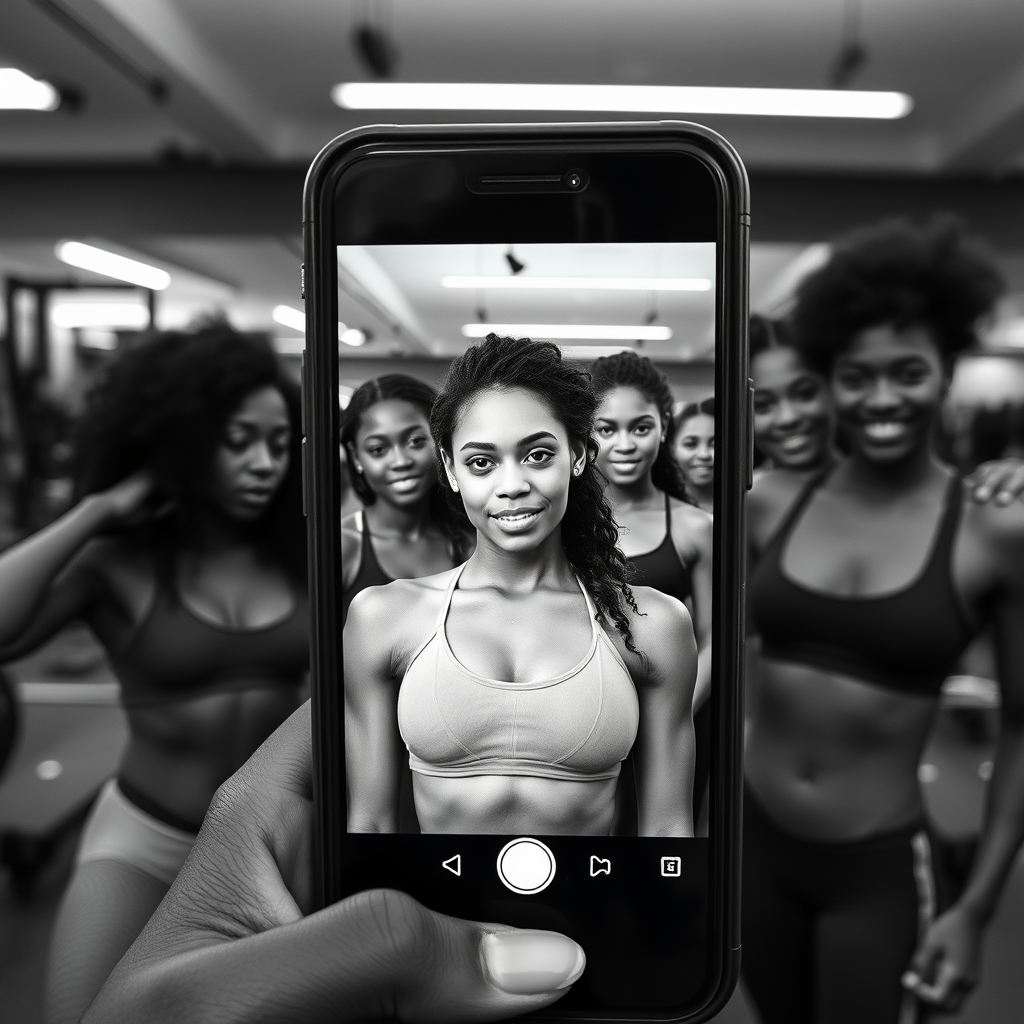
Ritual and Consistency
Phones help users build rituals around movement. Scheduled reminders and habit trackers reinforce discipline. Ritual supports emotional stability and identity. Disabled users benefit from structured pacing. Consistency becomes a source of pride. Phones anchor routines in daily life. This reduces decision fatigue and procrastination. The gym becomes part of the user’s rhythm. Mobile tech supports behavioral architecture. It turns repetition into meaning.
Emotional Feedback
Phones offer real-time emotional feedback through biometric data. Heart rate, breath, and exertion levels reflect internal states. This helps users adjust intensity and pacing. Emotional feedback validates subjective experience. Disabled users benefit from data that affirms invisible symptoms. Phones support emotional literacy through metrics. This fosters trust in the body. The gym becomes a dialogue, not a demand. Mobile tech listens and responds. It makes emotion measurable.
Symbolic Closure
Phones help users end workouts with intention. Cooldown apps and journaling tools support emotional integration. Reflection becomes part of the ritual. Disabled users benefit from structured transitions. Closure reduces lingering stress and fatigue. Phones offer prompts for gratitude and goal-setting. This reinforces progress and emotional clarity. The gym becomes a complete arc, not a fragmented task. Mobile tech supports narrative cohesion. It turns effort into meaning.
Pros and Cons of Mobile Phone Use in the Gym
| Aspect | Pros | Cons |
|---|---|---|
| Emotional Regulation | Supports mood control, reduces anxiety | Can become a crutch or distraction |
| Autonomy | Empowers self-guided routines | May reduce interpersonal engagement |
| Identity Formation | Allows personalized tracking and sharing | Risk of comparison or performative pressure |
| Cognitive Load | Simplifies routines and pacing | Over-reliance may reduce adaptability |
| Emotional Safety | Offers emergency access and predictability | May isolate users from real-time support |
| Motivation | Gamified features boost consistency | Can create pressure to maintain streaks |
| Social Belonging | Connects users to communities | Online validation may replace in-person connection |
| Privacy | Controls visibility and interaction | May reinforce avoidance behaviors |
| Adaptive Learning | Supports diverse learning styles | Requires digital literacy |
| Symbolic Ownership | Anchors identity and routine | May deepen dependence on tech rituals |

How Mobile Use in Gyms Has Evolved Over Time
| Era | Key Features | Psychological Impact |
|---|---|---|
| 2005–2010 | Music and timers dominate | Basic mood regulation and pacing |
| 2010–2015 | Fitness apps emerge | Structured autonomy and goal-setting |
| 2015–2020 | Wearables and biometric tracking | Emotional feedback and recovery awareness |
| 2020–2023 | Gamification and social sharing | Motivation, identity formation, and digital belonging |
| 2023–2025 | Adaptive design and emotional accessibility | Inclusive autonomy, symbolic ownership, and emotional safety |
Emotional Adaptability
Mobile phones help users adapt workouts to shifting emotional states. Stress, fatigue, or frustration can derail performance without warning. Apps that offer mood-based routines or calming transitions support flexibility. This adaptability reduces guilt and self-judgment. Disabled users benefit from routines that adjust to pain or energy fluctuations. Emotional adaptability fosters resilience and self-compassion. Phones allow users to pivot without abandoning effort. The gym becomes a responsive space, not a rigid one. Mobile tech honors emotional nuance. It makes change feel like progress.
Self-Compassion and Forgiveness
Phones support emotional recovery after missed workouts or setbacks. Habit trackers and journaling apps encourage reflection without shame. Disabled users often navigate unpredictable health conditions. Mobile platforms allow them to log effort without punishment. This fosters self-compassion and emotional forgiveness. Users learn to see rest as part of growth. Phones help reframe failure as feedback. The gym becomes a place of emotional repair. Mobile tech supports psychological continuity. It turns lapses into learning.
Emotional Anchoring
Phones help users anchor their workouts in personal meaning. Playlists, affirmations, and visual cues create emotional rituals. These anchors stabilize mood and reinforce identity. Disabled users benefit from symbolic routines that affirm agency. Anchoring reduces emotional drift and distraction. It also supports consistency across environments. Phones become emotional landmarks in chaotic spaces. The gym becomes a ritual site, not just a physical one. Mobile tech deepens emotional presence. It turns repetition into resonance.
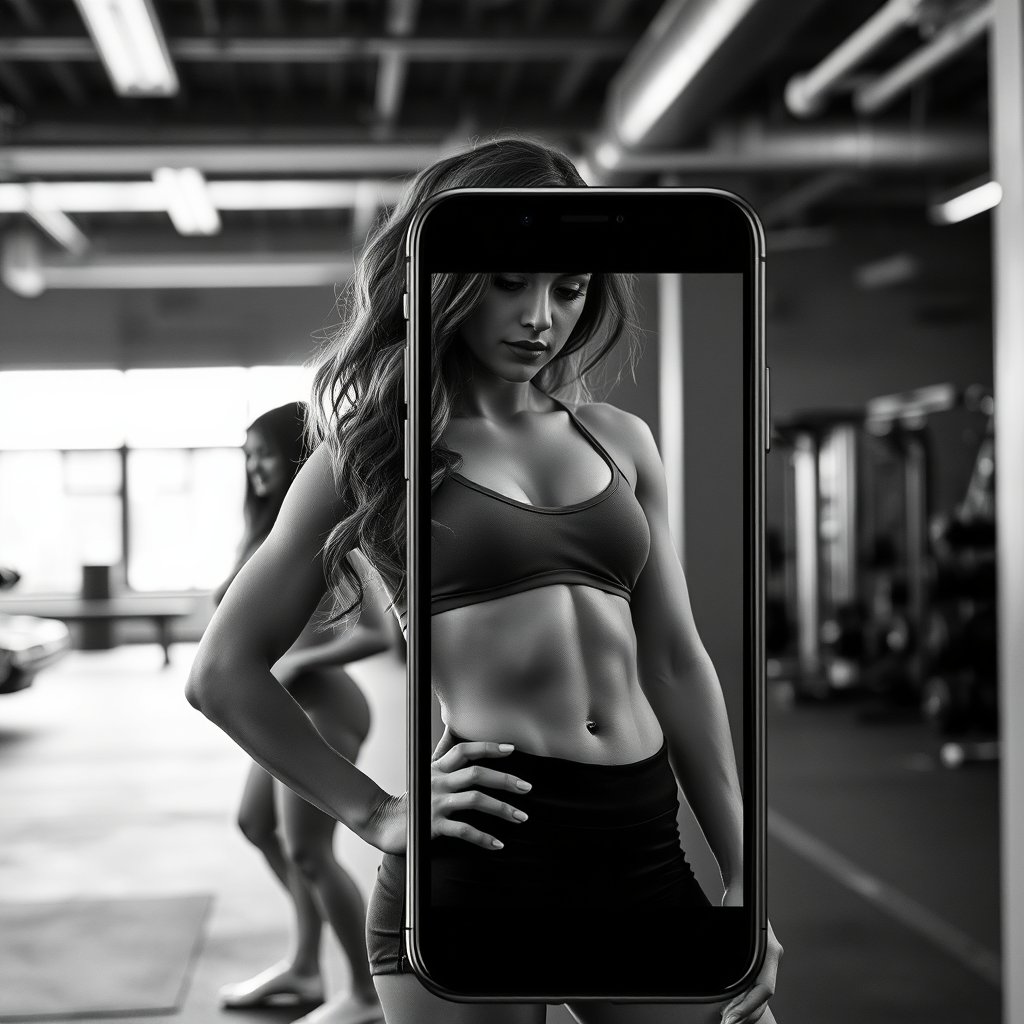
Behavioral Conditioning and Habit Formation
Mobile phones reinforce behavioral conditioning through repetition, reward, and cue-based design. Apps use visual streaks, badges, and progress bars to trigger dopamine release, reinforcing consistency. This aligns with operant conditioning models, where behavior is shaped by reward feedback. For disabled users, adaptive pacing and milestone tracking reduce cognitive fatigue and increase emotional payoff. Habit formation becomes less about willpower and more about environmental design. Timed reminders and structured routines externalize discipline. The phone becomes a behavioral scaffold, reducing reliance on internal motivation. Over time, these cues create automaticity—effortless repetition without conscious strain. The gym becomes a ritualized space, anchored by digital rhythm. Mobile tech turns habit into architecture.
Disability as Design Intelligence
Disability is not a limitation—it’s a lens that reveals where systems fail and where innovation begins. Mobile phones have become essential tools for disabled gym-goers, not just for access, but for agency. They offer adaptive pacing, voice control, screen readers, and biometric feedback that respond to fluctuating energy, pain, and sensory thresholds. This transforms the gym from a site of exclusion into a space of responsive design. For wheelchair users, apps like WheelFit provide seated routines with visual cues and community support.
For neurodivergent users, structured timers and simplified interfaces reduce cognitive load and emotional overwhelm. Mobile tech allows disabled users to train without asking for permission, without performing visibility, and without compromising dignity. It supports emotional regulation, spatial autonomy, and symbolic ownership. The gym becomes a site of reclamation, where disabled bodies are not accommodated—they are centered. Disability reveals what inclusive design should be: flexible, intelligent, and emotionally attuned.
Interoception and Body Awareness
Interoception—the ability to sense internal bodily states—is often impaired in trauma survivors, neurodivergent individuals, and those with chronic illness. Mobile phones enhance interoceptive awareness through biometric feedback and guided body scans. Apps that track heart rate variability, breath cycles, and exertion levels help users reconnect with their bodies. This supports emotional regulation and injury prevention. For disabled users, interoceptive data validates invisible symptoms and supports pacing. Body awareness becomes a skill, not a guess. Phones offer real-time insight into physiological thresholds. The gym becomes a space of embodied intelligence. Mobile tech turns sensation into signal. It makes the body legible.
Emotional Labor and Social Masking
Many gym-goers, especially disabled and neurodivergent users, engage in emotional labor to appear “normal” or “motivated.” Mobile phones reduce the need for social masking by offering private, self-paced routines. This lowers emotional exhaustion and improves authenticity. Users can train without performing enthusiasm or suppressing discomfort. Emotional labor is replaced by emotional honesty. Phones allow users to disengage from performative culture and reconnect with intrinsic goals. The gym becomes less about optics and more about experience. Mobile tech supports psychological safety by reducing social surveillance. It turns effort inward. It honors emotional truth.
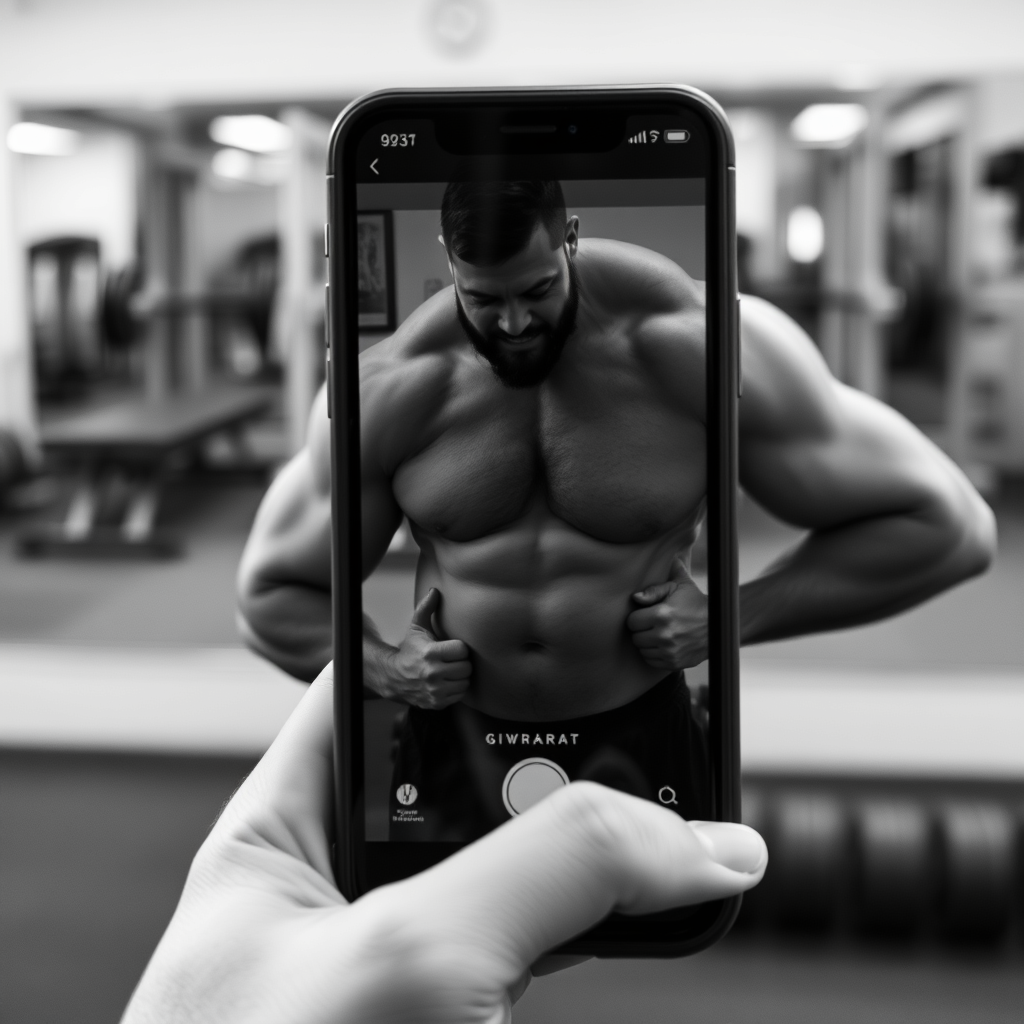
Attentional Anchoring and Flow State
Flow state—deep immersion in a task—is linked to attentional anchoring and reduced self-consciousness. Mobile phones support flow by structuring time, minimizing distractions, and offering rhythmic cues. Interval timers, music loops, and biometric pacing help users stay present. For neurodivergent users, this reduces sensory overload and cognitive fragmentation. Flow becomes accessible through design. Phones act as attentional anchors, guiding users into sustained engagement. The gym becomes a space of absorption, not interruption. Mobile tech supports psychological immersion. It turns distraction into direction. It makes focus feel natural.
Emotional Forecasting and Predictive Pacing
Mobile apps that track sleep, stress, and mood offer predictive insights into emotional readiness. This supports pacing and intensity decisions before symptoms escalate. For disabled users, forecasting helps prevent flare-ups and emotional crashes. Emotional forecasting aligns with anticipatory regulation models in behavioral psychology. Phones allow users to plan workouts around emotional capacity, not just physical availability. This reduces guilt and improves sustainability. The gym becomes a space of strategic timing. Mobile tech supports proactive adaptation. It turns emotion into foresight. It makes planning feel personal.
Symbolic Reclamation and Spatial Agency
For many disabled users, the gym is a space historically associated with exclusion or surveillance. Mobile phones allow symbolic reclamation through personalized rituals, playlists, and routines. This transforms the gym from hostile to hospitable. Spatial agency is restored through digital customization. Users define their own zones of comfort, intensity, and visibility. Phones become tools of spatial authorship. The gym becomes a canvas, not a cage. Mobile tech supports emotional sovereignty. It turns space into story. It makes presence feel powerful.
Emotional Containment and Decompression
After intense workouts, emotional decompression is essential for recovery. Mobile phones offer guided cooldowns, journaling prompts, and breathwork tools that support containment. This reduces emotional spillover and supports nervous system regulation. For trauma survivors and neurodivergent users, decompression prevents dysregulation. Phones act as emotional buffers, helping users transition from effort to rest. The gym becomes a complete arc, not a fragmented task. Mobile tech supports closure and integration. It turns intensity into coherence. It makes recovery feel intentional.
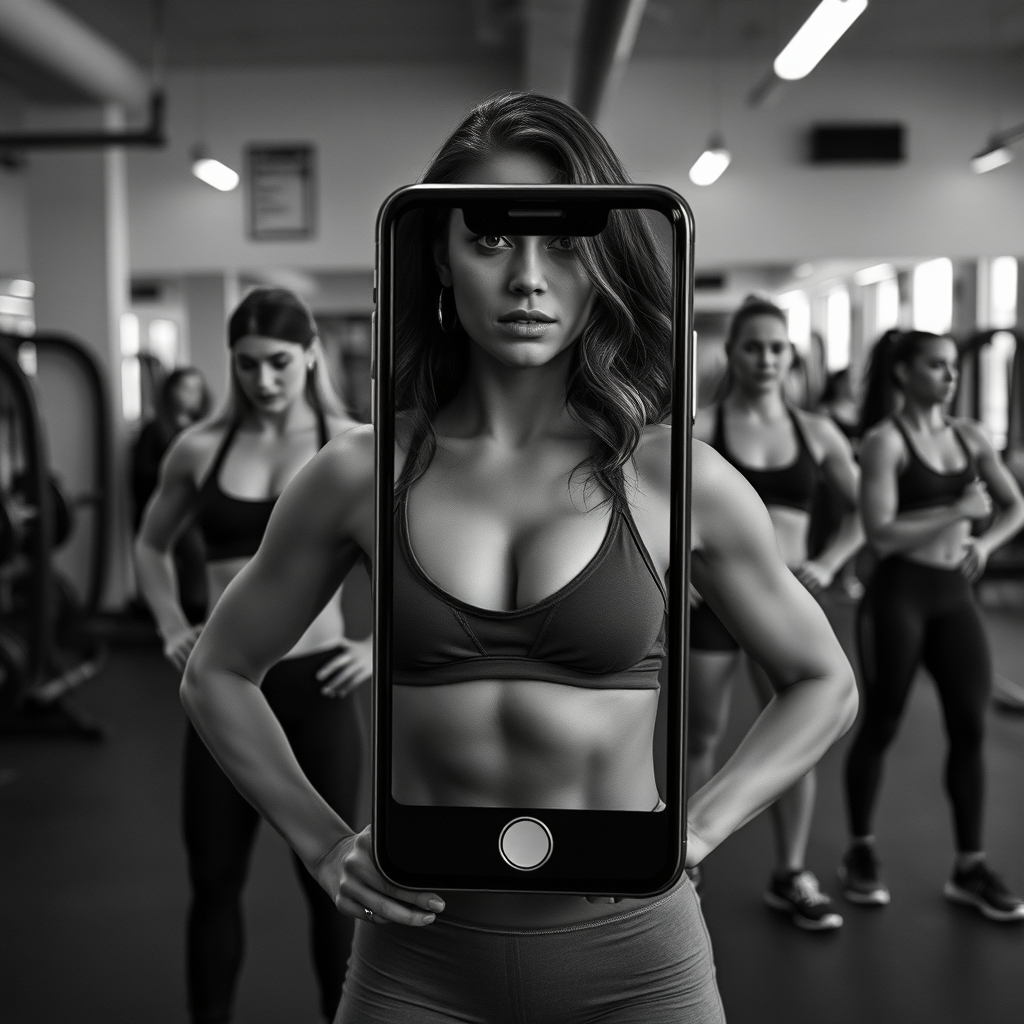
Emotional Literacy and Self-Reflection
Mobile phones help users develop emotional literacy through data, journaling, and pattern recognition. Apps that track mood, energy, and performance offer insight into emotional cycles. This supports self-awareness and emotional regulation. For disabled users, emotional literacy validates complexity and nuance. Reflection becomes part of the training process. Phones offer language for feelings that were previously invisible. The gym becomes a site of emotional education. Mobile tech supports psychological growth. It turns data into dialogue. It makes emotion a skill.
Emotional Accessibility and Interface Design
Accessibility is not just physical—it’s emotional and cognitive. Mobile apps that offer voice control, screen readers, and simplified interfaces reduce frustration. For users with sensory sensitivities or cognitive impairments, emotional accessibility is essential. Phones allow customization of pace, format, and feedback style. This supports dignity and independence. Emotional accessibility reduces shame and increases engagement. The gym becomes inclusive by design. Mobile tech supports universal usability. It turns access into experience. It makes fitness feel possible.
Vulnerability as Strength
Mobile phones allow users to train without masking discomfort or fear. Apps that support pacing, journaling, and biometric feedback validate emotional complexity. Vulnerability becomes visible, not hidden. Disabled users benefit from tools that normalize fluctuation and fatigue. The gym becomes a space where effort is honored, not judged. Phones reduce the need for emotional labor and social performance. They offer quiet rituals that affirm presence. Vulnerability is reframed as resilience. Mobile tech supports emotional truth. It turns fragility into force.
Confidence in Motion
Confidence is not static—it’s built through repetition, feedback, and autonomy. Mobile phones reinforce confidence by tracking progress and offering personalized cues. Users see their growth in data, not just mirrors. For disabled gym-goers, this visibility counters stigma and self-doubt. Confidence becomes a process, not a personality trait. Phones offer structure that reduces uncertainty. They help users trust their bodies again. The gym becomes a site of self-affirmation. Mobile tech supports embodied confidence. It turns motion into mastery.
Grace Under Pressure
Training often involves discomfort, unpredictability, and emotional strain. Mobile phones help users maintain composure through guided pacing and recovery tools. Grace is not about ease—it’s about alignment. Disabled users benefit from apps that adapt to pain, fatigue, or sensory overload. Phones offer emotional scaffolding in high-pressure moments. They reduce panic and restore rhythm. The gym becomes a space of emotional choreography. Mobile tech supports calm within chaos. It turns stress into structure. It makes grace a skill.
Joy in Repetition
Repetition is often framed as boring or mechanical. Mobile phones reframe it as ritual, rhythm, and emotional grounding. Apps that track streaks, offer music loops, or visualize progress make repetition feel meaningful. Joy emerges from consistency. For disabled users, repetition supports pacing and predictability. Phones help users find pleasure in small wins. The gym becomes a site of emotional rhythm. Mobile tech turns monotony into momentum. It makes repetition feel alive. It turns routine into joy.
Trust in the Body
Many users struggle to trust their bodies after injury, illness, or trauma. Mobile phones offer data that rebuilds that trust. Biometric feedback validates effort and guides pacing. For disabled users, this trust is foundational. Phones reduce fear of flare-ups or setbacks. They offer real-time reassurance. The gym becomes a space of reconnection. Mobile tech supports embodied trust. It turns uncertainty into insight. It makes the body feel safe again.
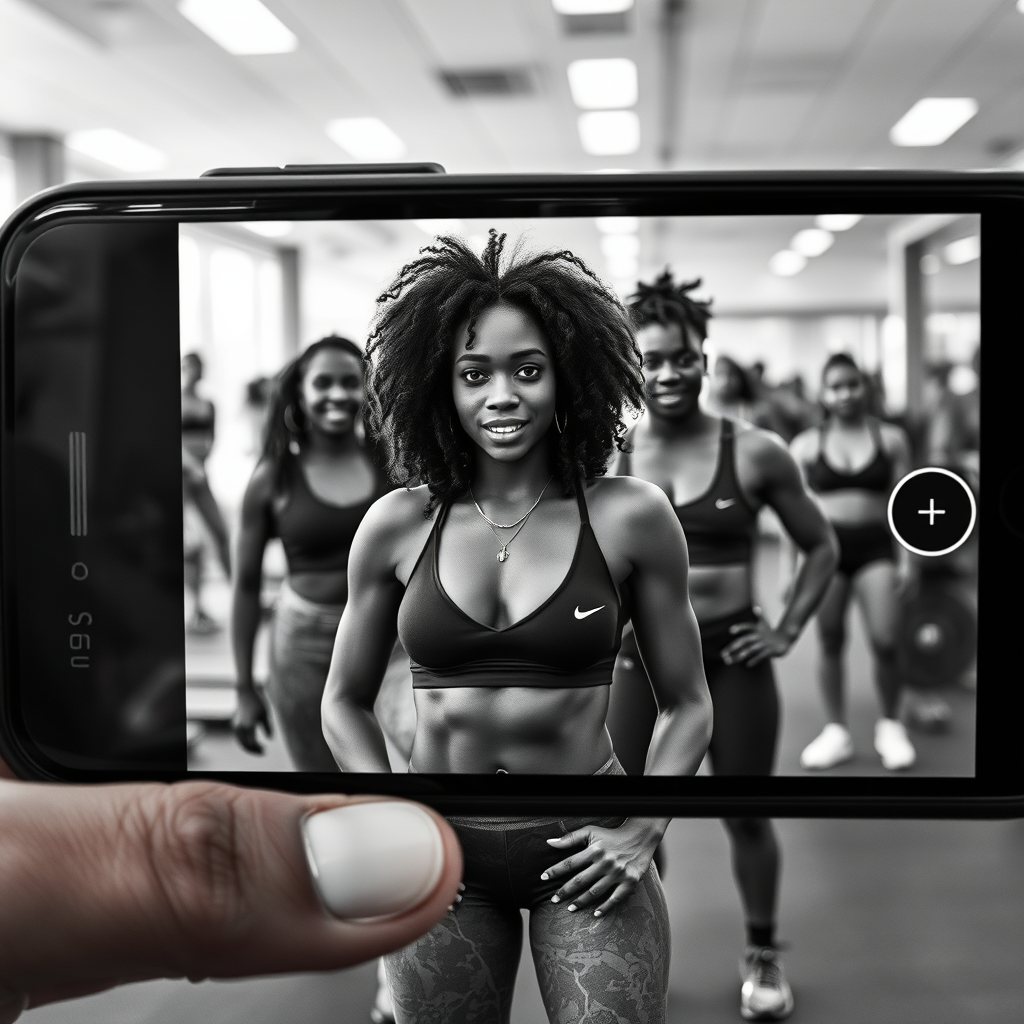
Pride in Progress
Progress is often invisible, especially for disabled or neurodivergent users. Mobile phones make it visible through metrics, milestones, and reflection. Pride emerges from effort, not aesthetics. Phones help users track what matters to them. They offer emotional validation through data. The gym becomes a site of self-recognition. Mobile tech supports pride without performance. It turns progress into presence. It makes growth feel personal. It honors the journey.
Calm in the Chaos
Gym environments can be loud, crowded, and overstimulating. Mobile phones offer tools for emotional regulation and sensory control. Calm becomes a choice, not a reaction. For users with PTSD, anxiety, or sensory sensitivities, this control is essential. Phones help users create emotional boundaries. They offer grounding through breathwork, music, and pacing. The gym becomes less chaotic and more intentional. Mobile tech supports inner stillness. It turns noise into navigation. It makes calm feel possible.
Hope in the Data
Data is not just numbers—it’s narrative. Mobile phones help users see patterns, progress, and potential. Hope emerges from visibility. For disabled users, data affirms effort that others may overlook. Phones offer emotional momentum through metrics. They help users forecast improvement. The gym becomes a space of possibility. Mobile tech turns data into direction. It makes hope measurable. It turns numbers into meaning.
Resilience in Rhythm
Resilience is built through rhythm, not just grit. Mobile phones help users structure effort, recovery, and reflection. Apps that support pacing and habit formation reinforce emotional endurance. For disabled users, rhythm reduces unpredictability and stress. Phones offer rituals that stabilize mood and energy. The gym becomes a site of emotional cadence. Mobile tech supports bounce-back through design. It turns rhythm into resilience. It makes repetition restorative. It honors the comeback.
Belonging in Silence
Not every gym-goer wants noise, attention, or interaction. Mobile phones offer quiet companionship and emotional privacy. Belonging doesn’t require visibility—it requires safety. For disabled users, silence is often more inclusive than speech. Phones allow users to train without explanation. They offer symbolic presence through routine and ritual. The gym becomes a space of quiet affirmation. Mobile tech supports invisible belonging. It turns silence into sanctuary. It makes solitude feel shared.
Emotional Synchronization and Biometric Harmony
Phones help users synchronize emotional and physiological states through biometric feedback. Heart rate variability, breath pacing, and exertion tracking align body and mind. This harmony improves performance and emotional clarity. For disabled users, synchronization supports pacing and reduces flare-ups. Emotional and physical effort become unified. Phones offer real-time cues for alignment. The gym becomes a space of coherence, not conflict. Mobile tech supports integrated effort. It turns fragmentation into flow. It makes training feel whole.
Emotional Dimensions of Mobile Phone Use in the Gym
| Emotional Theme | Psychological Function | Mobile Feature | Impact on Users |
|---|---|---|---|
| Vulnerability as Strength | Reduces emotional masking and social performance | Private routines, journaling apps | Validates discomfort, supports authenticity |
| Confidence in Motion | Builds self-efficacy through feedback and autonomy | Progress tracking, adaptive pacing | Reinforces trust in effort and body |
| Grace Under Pressure | Supports composure during stress or sensory overload | Breathwork tools, biometric feedback | Reduces panic, restores rhythm |
| Joy in Repetition | Reframes routine as ritual and rhythm | Habit trackers, music loops | Creates emotional grounding and pleasure |
| Trust in the Body | Rebuilds body awareness and safety | Heart rate monitors, exertion logs | Validates invisible symptoms, reduces fear |
| Pride in Progress | Makes effort visible and measurable | Milestone badges, mood logs | Affirms growth beyond aesthetics |
| Calm in the Chaos | Offers emotional regulation in overstimulating environments | Noise control, visual timers | Supports sensory boundaries and focus |
| Hope in the Data | Reveals patterns and potential through metrics | Sleep trackers, recovery graphs | Builds emotional momentum and future orientation |
| Resilience in Rhythm | Reinforces bounce-back through structured pacing | Interval timers, streak visualizers | Stabilizes mood, supports emotional endurance |
| Belonging in Silence | Honors quiet presence and emotional privacy | Discreet tracking, solo routines | Reduces social fatigue, affirms invisible participation |
Emotional Forecasting
Phones allow users to anticipate emotional patterns through data. Sleep, stress, and mood logs reveal trends over time. This forecasting supports better planning and pacing. Disabled users benefit from predictive insights into flare-ups or fatigue. Emotional forecasting reduces surprise and panic. It also supports proactive recovery strategies. Phones help users align workouts with emotional readiness. The gym becomes a place of strategic timing. Mobile tech turns emotion into foresight. It makes planning feel personal.
Emotional Neutrality
Phones help users train without emotional distortion. Data offers objective feedback that counters self-doubt. For disabled users, this validates effort beyond appearance. Emotional neutrality reduces shame and comparison. It supports focus and clarity. Phones allow users to separate mood from metrics. The gym becomes a space of emotional detachment when needed. Mobile tech offers psychological distance. It makes effort feel clean. It turns emotion into information.
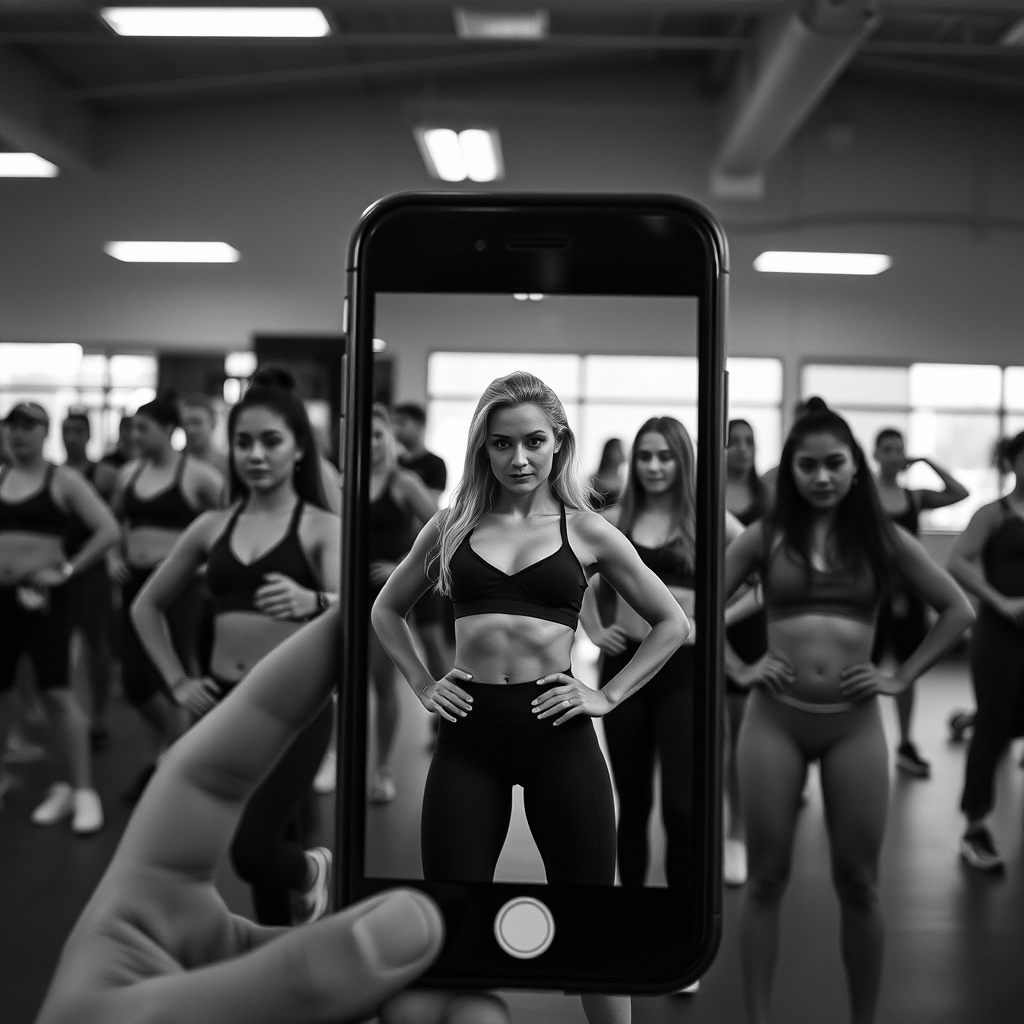
Courage in Customization
Customization is more than convenience—it’s a declaration of agency. Mobile phones allow users to tailor workouts to their emotional and physical needs. For disabled gym-goers, this personalization counters one-size-fits-all programming. Courage emerges when users override generic expectations and build routines that reflect their truth. Apps that adapt to pain, fatigue, or neurodivergence empower users to train with integrity. Customization reduces shame and increases emotional safety. Phones become tools of self-definition. The gym becomes a space of chosen effort, not imposed structure. Mobile tech supports courageous autonomy. It turns personalization into power.
Empathy in Design
Empathy is embedded in the way mobile apps respond to diverse needs. Features like voice control, screen readers, and adaptive pacing reflect emotional intelligence in design. For disabled users, this empathy is not symbolic—it’s functional. It reduces frustration, fatigue, and exclusion. Phones that anticipate emotional and cognitive variation foster dignity. The gym becomes inclusive not through signage, but through interface. Empathy in design supports emotional accessibility. It turns usability into affirmation. Mobile tech becomes a companion, not just a tool. It makes fitness feel human.
Reflection in Recovery
Recovery is not just physical—it’s emotional integration. Mobile phones offer tools for journaling, mood tracking, and guided decompression. These rituals help users process effort, setbacks, and progress. For disabled users, recovery may involve navigating pain, grief, or emotional fatigue. Phones support reflection without judgment. They help users connect dots between body, mind, and mood. The gym becomes a space of emotional digestion. Mobile tech supports narrative continuity. It turns cooldown into clarity. It makes rest feel restorative.
Freedom in Feedback
Feedback is often framed as correction, but mobile phones reframe it as liberation. Biometric data, pacing cues, and progress logs offer insight without shame. For disabled users, feedback validates effort that may not be externally visible. It supports emotional neutrality and self-trust. Phones allow users to train without guessing or comparing. Feedback becomes a mirror, not a verdict. The gym becomes a space of informed choice. Mobile tech supports freedom through information. It turns metrics into meaning. It makes growth feel guided.
Emotional Calibration
Phones help users fine-tune their emotional state before, during, and after workouts. Breathing apps, music, and biometric feedback support micro-adjustments. Calibration improves performance and safety. Disabled users benefit from tools that adjust intensity based on mood or pain. Emotional calibration fosters precision and self-awareness. It also reduces emotional volatility. Phones become instruments of emotional tuning. The gym becomes a place of psychological refinement. Mobile tech supports subtle shifts. It makes emotion actionable.
Emotional Resilience
Phones help users build emotional resilience through routine and reflection. Consistent tracking reinforces progress despite setbacks. Disabled users benefit from data that affirms effort under adversity. Resilience becomes measurable and visible. Phones support emotional bounce-back after difficult sessions. They also offer motivational cues and peer support. The gym becomes a site of emotional training, not just physical. Mobile tech builds psychological endurance. It turns struggle into strength. It makes resilience tangible.
Emotional Integration
Phones help users integrate emotional experiences into their fitness journey. Journaling, voice notes, and mood logs create narrative continuity. Disabled users benefit from tools that connect physical effort to emotional healing. Integration reduces fragmentation and confusion. It also supports long-term growth. Phones become emotional archives of transformation. The gym becomes a chapter in a larger story. Mobile tech supports coherence and reflection. It turns effort into autobiography. It makes emotion part of the process.
Emotional Permission
Phones give users permission to feel without judgment. Apps that normalize rest, emotion, and imperfection reduce shame. Disabled users benefit from platforms that honor complexity. Permission fosters authenticity and emotional safety. Phones allow users to train without masking their state. The gym becomes a space of emotional honesty. Mobile tech supports psychological transparency. It turns vulnerability into strength. It makes emotion visible. It honors the full human experience.
Emotional Intelligence
Phones help users develop emotional intelligence through feedback and reflection. Biometric data reveals patterns in stress, recovery, and mood. Disabled users benefit from insights that support self-regulation. Emotional intelligence improves decision-making and communication. It also supports empathy and self-trust. Phones become tools for emotional learning. The gym becomes a site of psychological growth. Mobile tech teaches users to listen inward. It turns data into wisdom. It makes emotion a skill.
Conclusion
Mobile phones have reshaped the psychological architecture of the gym. They offer emotional regulation, autonomy, and symbolic ownership to all users. For disabled gym-goers, they transform exclusion into empowerment. For everyone else, they offer clarity, control, and connection. The gym is no longer just physical—it’s emotional, cognitive, and digital. Mobile tech supports this evolution with precision and compassion. It turns workouts into rituals, data into meaning, and effort into identity. As technology continues to evolve, so will the emotional depth of fitness culture. The phone is no longer a distraction. It’s a mirror, a map, and a mentor.
Join the Discussion
How has your phone changed your emotional experience in the gym? Do you use it for pacing, reflection, or recovery?
#MobileMindset #EmotionalFitness #InclusiveStrength #SymbolicOwnership #DigitalResilience #AdaptiveTraining #FitnessPsychology #TechInMotion #WorkoutWisdom #EmotionalRecovery #NeurodivergentFitness #DisabilityEmpowerment #MindBodyTech #GymCultureShift #TrainWithClarity



